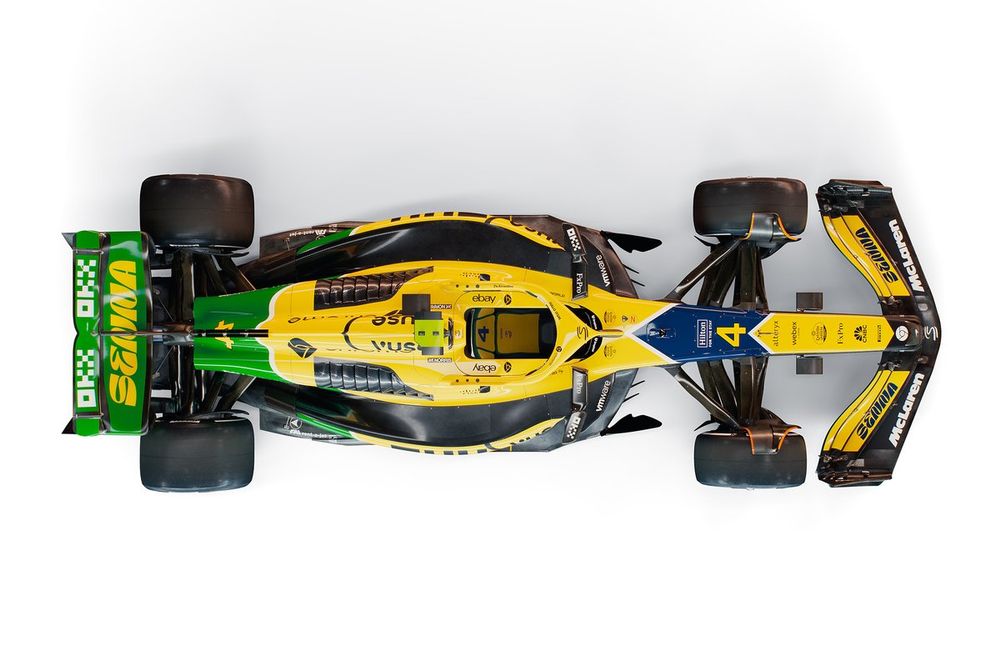Rather than a token change of paint on the sidepod, or a different looking front wing, it has elected for a complete livery takeover in the iconic yellow, green and blue colours of Senna’s helmet.
PLUS: How the wider motorsport world reacted to Senna’s death
But one interesting stand out element of the McLaren livery is the fact that not all its normal papaya colour has been taken off – and in particular the flashes on the front wheel fairings remain untouched.
It would have been obvious to have tweaked these to yellow so they better fit in with the rest of the car, but there is a clear reason that has not happened: the drivers.
McLaren’s marketing department consulted heavily with the race team about the colour change for Monaco, and it was made clear that the papaya flashes had to stay on the wheel fairings as they are an important visual reference marker for Lando Norris and Oscar Piastri.
On a Monaco street circuit where precision is absolutely critical, changing the colour of the fairings could have had a notable visual impact.
It is the reason too that, while drivers’ overalls and team kit will be changed for Monaco, the pitcrew will continue in their regular colours for the tyre changes.
As McLaren’s chief marketing officer Louise McEwan explained: “If you look closely at the car, you’ll have seen the front wheel covers have very purposely remained papaya.
McLaren Senna design for Monaco GP
Photo by: McLaren
“When we do a livery swap of this extent, a full wrap of the car, obviously, we can’t compromise performance in any way.
“We’ve worked over the last year with the whole of racing, particularly the aero team, and then trackside operations, to make sure that we don’t compromise performance. So those elements haven’t changed. They’re important cues for our drivers.
“When you see the team on track, the livery swap also extends to our team kit that you’ll see everyone wearing around the paddock as well.
“But we purposely to that point haven’t swapped out the full pitcrew because again, the drivers are trained to zone into those visual cues, and the last thing we want is them missing a pitstop.”
Click Here to Read the Full Original Article at Autosport.com – Formula 1 – Stories…

